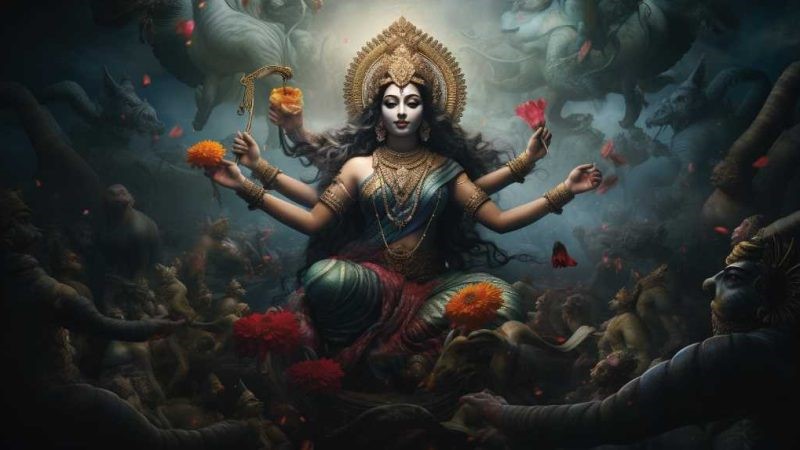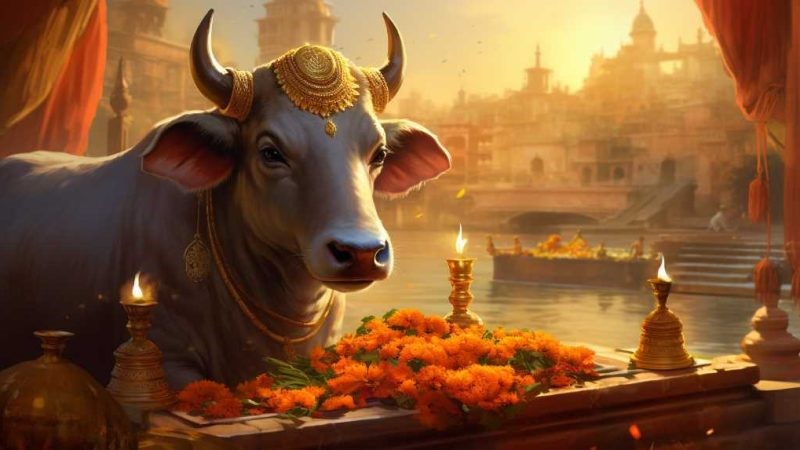Divine Guidance Hindu Scriptures on Meditation

Meditation is an important part of Hindu teachings and helps people find spiritual clarity. The oldest Hindu texts, the Vedas, introduce meditation, and later writings like the Upanishads talk more about its benefits, such as understanding oneself and the nature of reality better. The Bhagavad Gita adds to this by explaining Dhyana Yoga, which shows how meditation can create balance in our lives.
Patanjali’s Yoga Sutras give a step-by-step guide to meditation, helping people reach a deep state of focus and joy known as Samadhi. The Tantra texts offer another view, showing how energy and awareness are connected in meditation. These writings are valuable because they offer different ways for people to move beyond everyday life and connect with something greater.
However, it’s worth discussing how these ancient teachings can be applied in the modern world. For example, someone could use the concentration techniques from the Yoga Sutras to reduce stress at work. When we read and understand these texts, we learn not just how to meditate, but why it’s beneficial for our overall well-being.
The Vedas: Meditation’s Origins
The Vedas are important religious texts for Hindus and are some of the oldest writings that talk about meditation. They were written a long time ago, in the late Bronze Age, and contain the knowledge of wise people from ancient India. The Rigveda, one of these texts, often mentions ‘dhyana,’ which means meditation in Sanskrit. These mentions show us that even back then, people believed meditation could deeply change a person. However, the Vedas don’t go into detail about how to meditate. They mainly describe the experience as one where a person is completely focused and has an expanded awareness.
By looking at these old texts, we can see the beginnings of what would later become a wide variety of meditation practices in Hinduism.
In these writings, meditation is presented as a practice that can lead to powerful changes in one’s state of mind. It’s like finding the first pieces of a puzzle that, when put together, reveal a big picture of Hindu meditation over the years. The Vedas show us the early stages of a tradition that would grow and include many different ways to meditate.
Upanishads: Unveiling the Self
The Upanishads are important Hindu texts that offer guidance on meditation. They teach that through meditation, people can understand their true nature, which is often called the ‘Self’ or ‘Atman.’ These writings are found at the end of the Vedas, which are sacred Hindu scriptures, and they show us how to find out who we really are and how to achieve ‘Moksha,’ which means freedom or liberation.
Meditation, according to the Upanishads, is more than just a habit. It’s a deep dive into oneself. It’s about letting go of what doesn’t last and connecting with what always exists. The Upanishads say that the Self and the universe’s consciousness, called ‘Brahman,’ are actually the same. When someone meditates deeply, they can see through the confusion of everyday life and feel a unity with everything. This understanding is the highest goal of the Upanishads’ teachings.
For example, imagine you are sitting quietly, focusing on your breathing, and you start to feel a sense of calm that makes you feel connected to the world around you. This is a tiny step towards the kind of oneness described in the Upanishads. The idea is that with practice, this feeling can grow until you are no longer feeling separate from the rest of the world.
This is what the Upanishads guide us towards – a deep and profound connection that can help us feel free and at peace.
Bhagavad Gita: Dhyana Yoga
The Bhagavad Gita builds on the ideas from earlier texts called the Upanishads. It teaches how to meditate in a way that is easy to understand and do. This meditation is called Dhyana Yoga, and it helps people find inner peace and feel closer to a higher power.
The Gita is important because it gives simple steps to focus your mind and not worry too much about the results of what you do. It talks about how staying calm, controlling yourself, and focusing well can help you get ready for deep meditation. The book has a conversation between Prince Arjuna and Lord Krishna, and through their talk, it shares wisdom about how to look beyond the everyday world and find deeper knowledge and peace by practicing Dhyana Yoga.
Here’s an example to make it clearer: The Gita suggests that instead of getting worked up over whether you win or lose at something, it’s better to concentrate on doing your best and learning from the experience. This idea can help you stay focused on your goals without getting stressed about things you can’t control.
In everyday language, imagine talking to a friend who is nervous about a job interview. You might tell them, ‘Just do your best and don’t worry about whether you get the job or not. What matters is the experience you gain.’ This is similar to the idea in the Gita of focusing on your actions, not the outcomes.
To sum it up, the Bhagavad Gita offers a helpful way to practice meditation that can lead to self-awareness and a peaceful state of mind. By learning and following its teachings, you can work towards a calm and focused life.
Patanjali’s Yoga Sutras: Eightfold Path
Patanjali’s Yoga Sutras teach us the Eightfold Path, which is essential for growing spiritually and practicing yoga. Known as Ashtanga Yoga, it outlines eight steps that help people live a moral life and reach a deep state of awareness. The first steps, Yama and Niyama, are about living right and taking care of oneself. These are important because they lay the foundation for a yogic lifestyle.
Next, Asana and Pranayama focus on yoga poses and breathing techniques. These prepare us both physically and mentally for what’s to come. Then, Pratyahara teaches us to ignore outside distractions. This is crucial because it allows us to focus better. Dharana takes this focus further and helps us concentrate on a single point. As we get better at this, we move into Dhyana, which is when we’re fully absorbed in meditation. Finally, the peak of this journey is reaching Samadhi, where we experience a profound connection with a higher power.
Tantra Texts: Energy and Meditation
Tantra texts are guides that help people deeply understand energy and how our minds work using meditation. They go beyond the usual ways of finding spiritual growth. These old writings show how everything is connected, including our bodies, minds, and spirits.
Tantra focuses on waking up a powerful energy called kundalini, which is thought to be sleeping at the bottom of our spine. By doing certain meditations and rituals, people try to move this strong energy through the body’s energy spots, called chakras. This can lead to a clearer mind and a feeling of being free.
The texts give many methods, like chanting special words, imagining things, and honoring gods, to help create a strong bond with the spiritual world. Tantra tells us to pay attention to both the physical world and spiritual life. It says that by carefully changing how we use our energy, we can reach a wise and understanding state.
For example, instead of just sitting and thinking, a tantra practitioner might chant a special word, like ‘Om,’ to help focus their mind. By doing this along with other practices, they aim to feel more connected and aware.
The important thing is that tantra involves both learning and action – it’s not just about thinking, but also doing. It helps people find balance in their lives by paying attention to all aspects of themselves. This way, they can work towards a more enlightened way of living.
Conclusion
Hindu teachings offer a lot of helpful advice on meditation. The Vedas, which are very old texts, start the conversation by introducing meditation. Then, the Upanishads go deeper, giving us more insight into how meditation can help us understand ourselves better. The Bhagavad Gita gives practical advice on how to meditate and live our lives, while Patanjali’s Yoga Sutras lay out steps to follow for a good meditation practice. The Tantra texts, which are a bit more mysterious, also talk about meditation, focusing on how we can control our minds and energy.
Understanding these texts can really help someone who wants to meditate and grow spiritually within the Hindu way of thinking and doing things. Meditation is key because it helps us control our thoughts and feelings, which is a big part of being self-aware and mastering ourselves. For example, the Bhagavad Gita suggests focusing on a single point to calm the mind. It’s like following a recipe; these texts provide the ingredients and steps to reach a peaceful state of mind through meditation.
To sum it up, these Hindu scriptures are like a map for anyone interested in meditation. They offer guidance and specific techniques for achieving inner peace and understanding oneself. It’s about more than just sitting quietly; it’s a journey to finding clarity and joy within.






